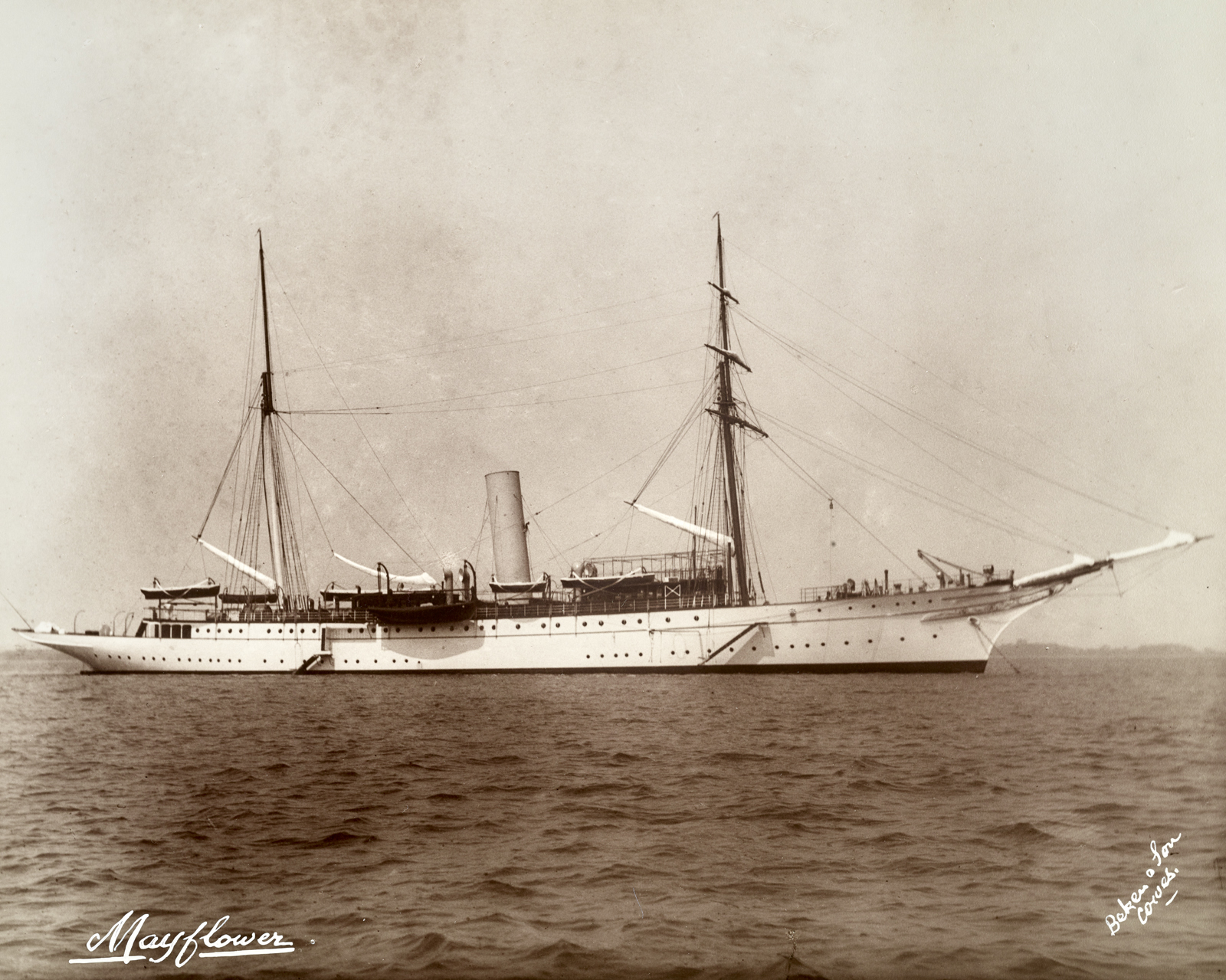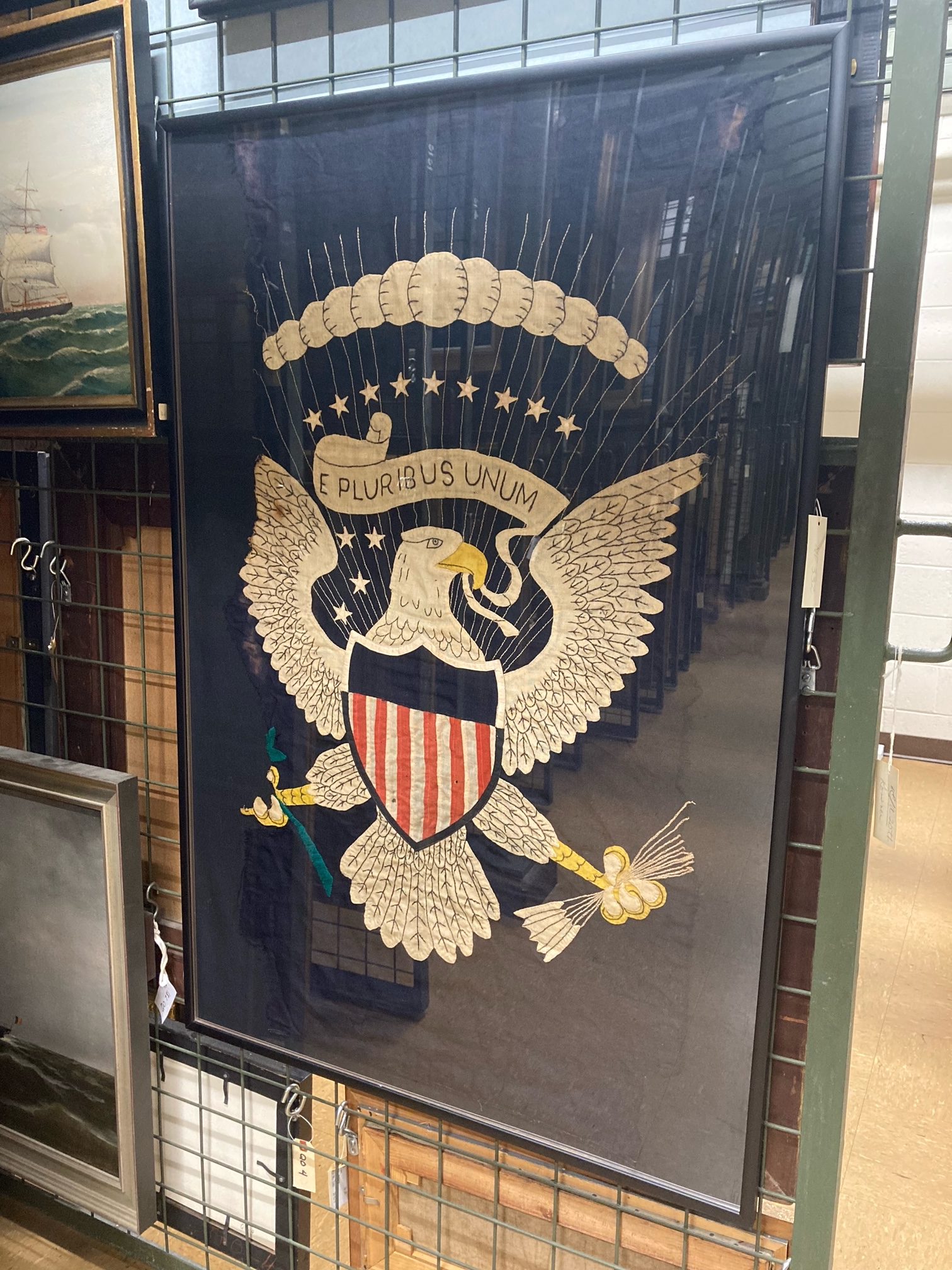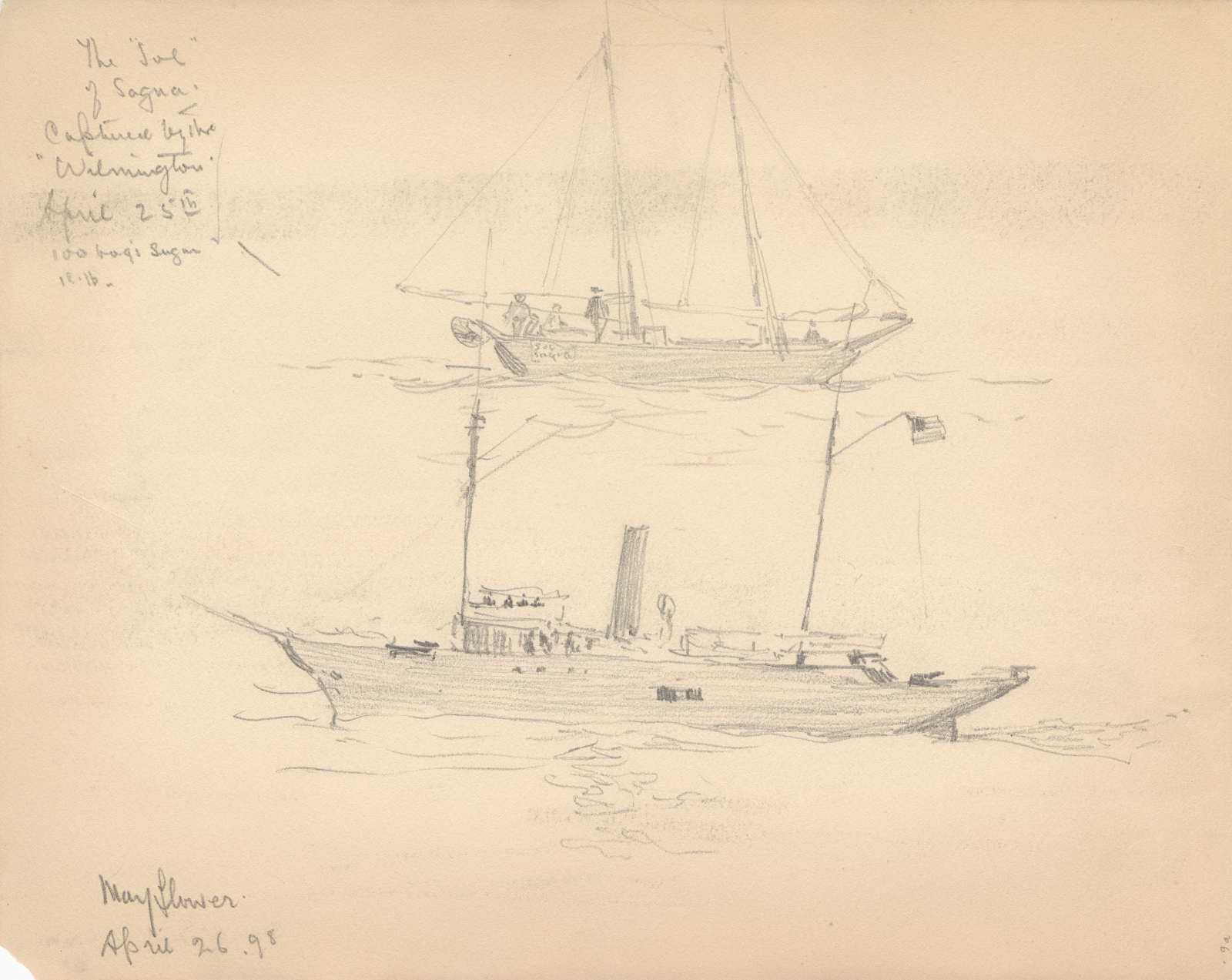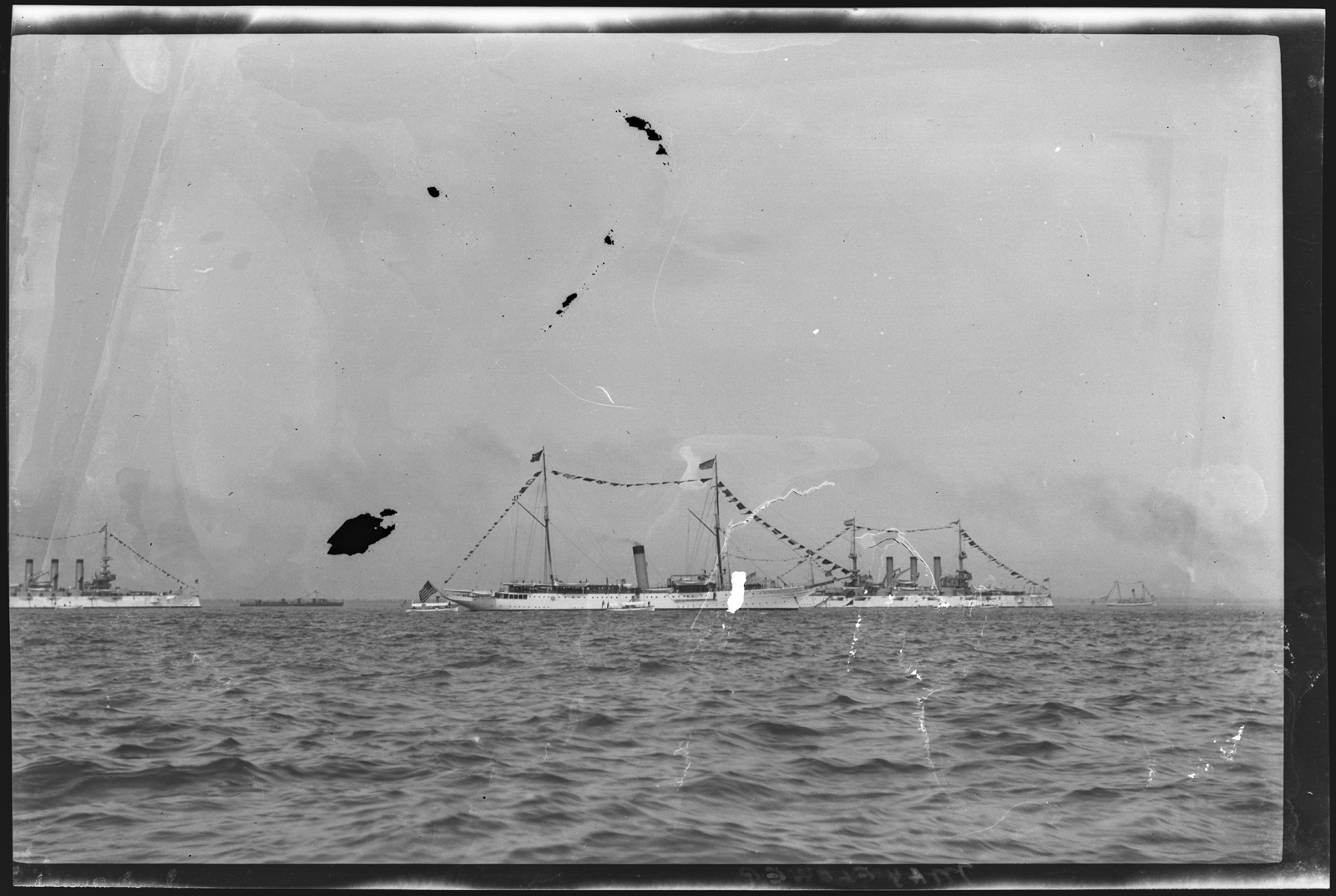Several years ago, I first learned of USS Mayflower, a presidential yacht. I was studying about the 1905 Portsmouth Peace Conference at the Portsmouth Navy Yard in Kittery, Maine. I was curious but didn’t have time to delve into the ship’s history.
Since then, I keep “bumping into” stories about this ship as I study and learn more about other topics. I read Erik Larson’s Dead Wake about the sinking of Lusitania and then read more about Woodrow Wilson’s relationship with Edith Bolling Galt. Turns out, they spent much of their time getting to know one another while on board USS Mayflower.
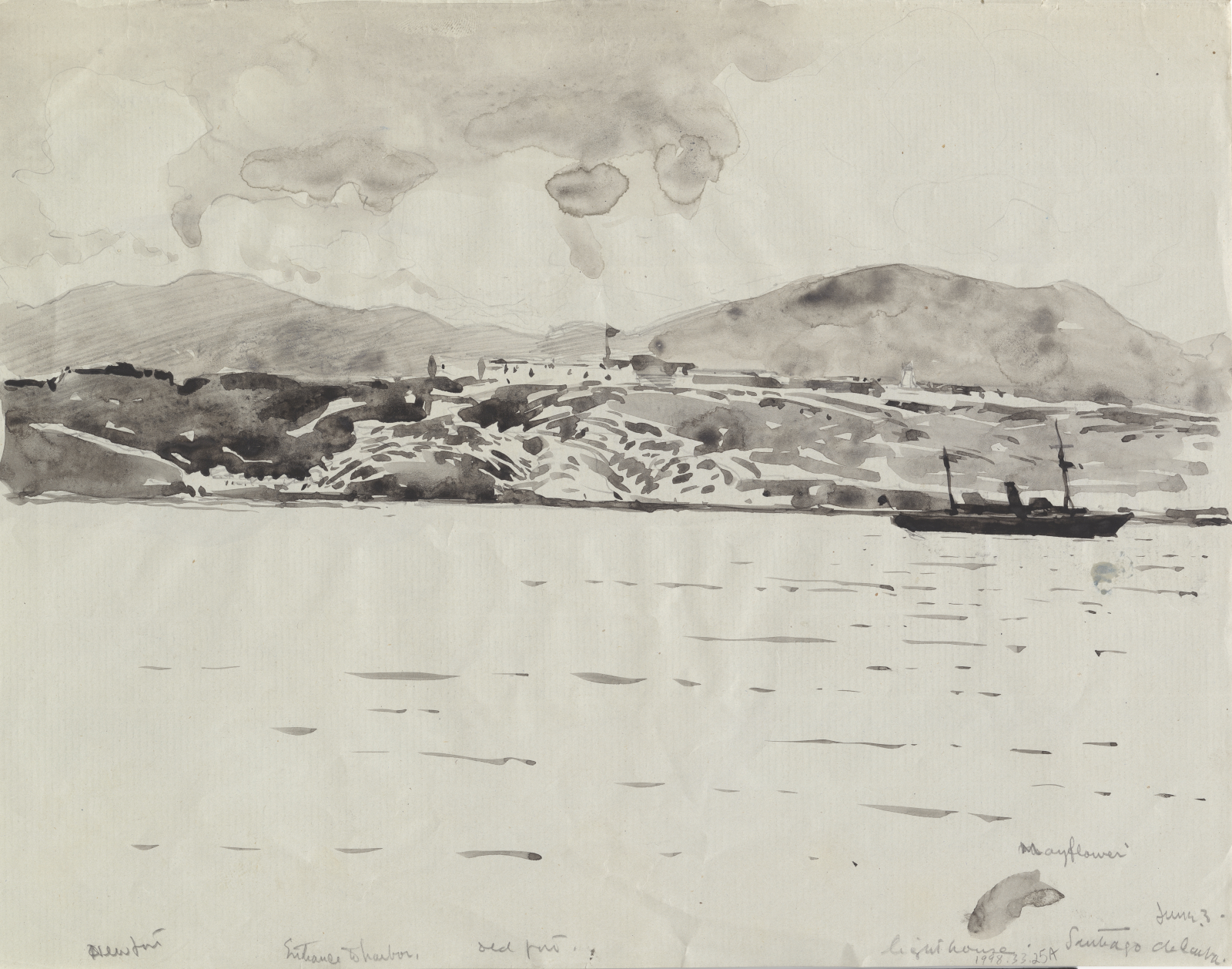
Due to the pandemic last year, most of the Mariners’ team worked remotely from home. My projects included cataloging works on paper — mostly plates removed from books, but there were also paintings. One collection was by the artist Carlton Chapman, a correspondent for Harper’s Weekly magazine during the Spanish-American War in 1898. I seriously appreciate his work because he labeled the artwork with the names of the locations and the ships in each scene! He is a hero of a museum cataloger’s heart.
A few days ago, I was in collections storage with guests when they asked about a framed flag hanging on a rack. I looked up the accession number, and sure enough, it’s from USS Mayflower. Well, alright already, I’ll write a blog about it! And here we are.
The Early Years
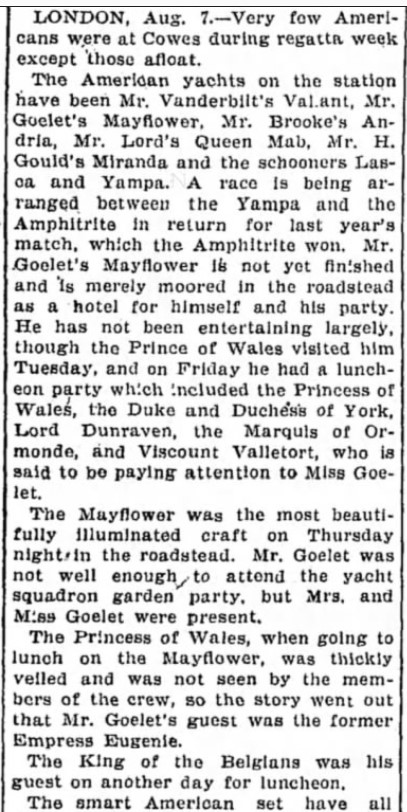 Mayflower began life in 1896 as a pleasure yacht of wealthy (to put it mildly) businessman Ogden Goelet. The ship began hosting parties for royal dignitaries even before construction was officially completed. On August 8, 1897, The World newspaper reported, “Mr. Goelet’s Mayflower is not yet finished and is merely moored in the roadstead as a hotel for himself and his party.” The article goes on to say, “He has not been entertaining largely,” except for a list of kings, princes, princesses, dukes, duchesses, lords, marquises, and a viscount. You know, just a few friends.
Mayflower began life in 1896 as a pleasure yacht of wealthy (to put it mildly) businessman Ogden Goelet. The ship began hosting parties for royal dignitaries even before construction was officially completed. On August 8, 1897, The World newspaper reported, “Mr. Goelet’s Mayflower is not yet finished and is merely moored in the roadstead as a hotel for himself and his party.” The article goes on to say, “He has not been entertaining largely,” except for a list of kings, princes, princesses, dukes, duchesses, lords, marquises, and a viscount. You know, just a few friends.
Sadly, Goelet did not get to enjoy his new yacht for very long. He passed away on board the yacht just a few weeks later, on August 27, 1897. He had been sick for an extended time, and The Daily Republican reported, “It is believed that the strain which Mr. Goelet underwent while entertaining guests at Cowes during the recent yachting events contributed considerably towards his death.” They must have been quite some parties!
The interior of Mayflower was, in a word, extravagant. “It is furnished more like a Fifth avenue mansion that [sic] a ship’s cabin, containing as it does a piano, settees, lounges, writing tables, etc. The work is executed in oak, carved and painted white in Louis XVI style. Adjoining this apartment is a stairway which leads to six commodious staterooms for guests. Next to these is the library, finished in oak in Louis XV style and containing 2,000 volumes.”
War and Peace
With the outbreak of the Spanish-American War the US Navy purchased Mayflower from the Goelet estate. The yacht joined Admiral Sampson’s squadron at the Havana harbor, capturing prize ships, firing on other ships, and helping to uphold the blockade. After the war, Mayflower served as Admiral Dewey’s flagship and then became a presidential yacht.
You can view images of Carlton Chapman’s published paintings about the war here.
In August 1905, USS Mayflower took part in another piece of international history: the Portsmouth Peace Treaty. The Russo-Japanese War of 1904-1905 had become a bit of a stalemate, and President Theodore Roosevelt stepped in to try and negotiate peace.
The Russian and Japanese envoys first met on board USS Mayflower in Oyster Bay, off the coast of Long Island near Roosevelt’s home. From there, they sailed separately to Kittery, Maine, with the Russians on USS Mayflower and the Japanese on USS Dolphin. The groups stayed at the Hotel Wentworth in Portsmouth, New Hampshire, and the negotiations continued at the Portsmouth Navy Yard in Kittery. Mayflower hosted social events as the negotiations proceeded. Thankfully, the two countries reached a consensus, ending the war and earning Roosevelt a Nobel Peace Prize in 1906.
You can learn more about USS Mayflower‘s role in the Portsmouth Peace Treaty here, and about Roosevelt’s Nobel Prize here.
USS Mayflower was commissioned, decommissioned, and recommissioned several times in its lifetime and served as host to numerous diplomats. After WWI a fire in 1921 couldn’t slow the ship down for long. The ship participated in WWII, escorting ships and keeping an eye out for German submarines along America’s coastline.
The End of the Legacy
In 1948 the ship carried Jewish refugees from Marseilles to Haifa, Israel, and then later served in the Israeli Navy. It was broken up in 1955 after nearly 60 years at sea, including three wars.
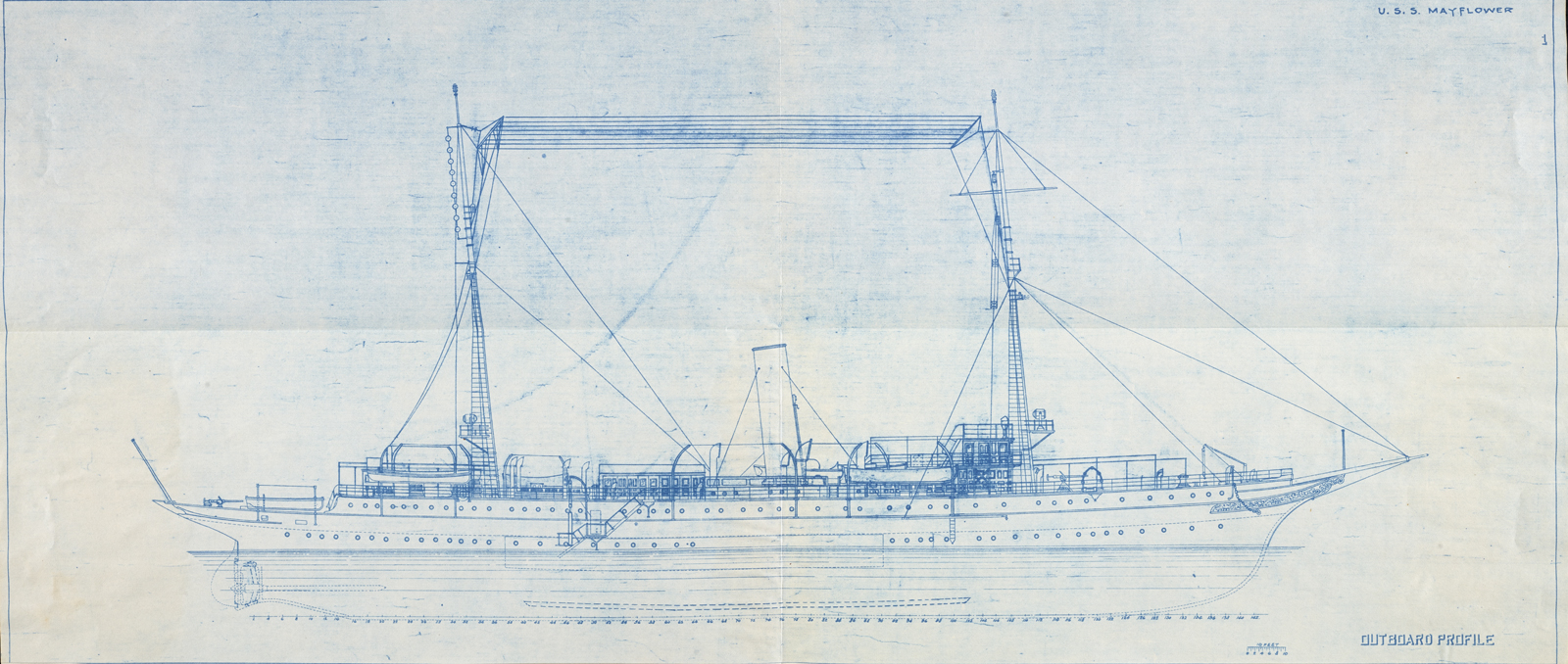
It is surprising that when I run across similar histories in several different states and museums, those histories have so many shared maritime connections. After all, we truly are all connected by the world’s waters, making us all Mariners!
